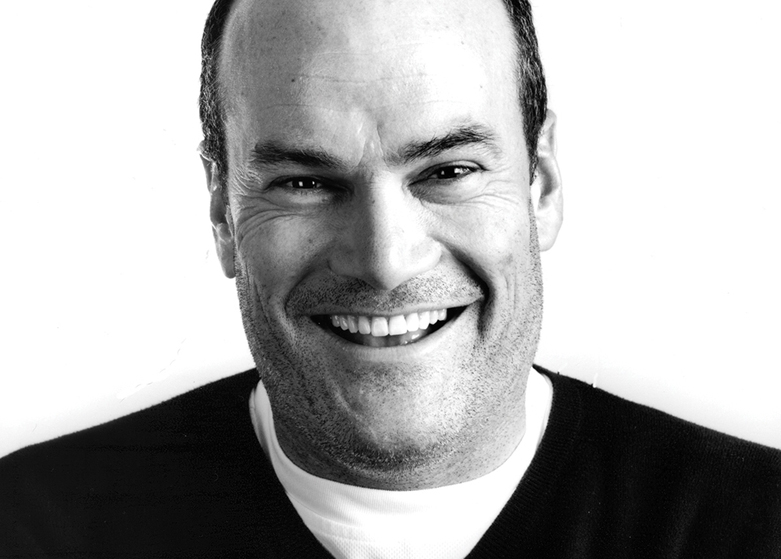
Brian Graham designs and consults across a range of disciplines, creating integrated design programs based on simplicity, practicality, function - modernist principles that give his work a timeless quality.
The following interview aims to give you an insight into Brian's creative process, as well as his view on workplace environment and current trends.
I started out as an interior designer and through the years experienced what seemed like a natural progression of going from the large scale of a floor plan to the smaller scale of the furniture that inhabits that floor plan. I think my major career landmark is that I’ve been fortunate enough to find something that I love doing and to develop it into a way to make a living… at the end of the day, I think that’s a significant accomplishment.
If we’re talking about design in general then I think it’s changed dramatically in ways both positive and not so positive.
First off, I think the challenge in front of us as a product design industry is to define what is “good design”. It’s been my experience that “everything is designed” and I truly believe that. Making things in this world every day is a conscious act, and along the way are hundreds of small choices to consider, and so you hope that you make more good choices than bad ones, and that those good choices are supported by good clients, and good engineers, and the result is better than if you’d let the bad choices rule.
On the Interior Design side of things I think there is a fragmentation in the scope of work where more and more of the parts and pieces of projects are being delegated to specialized groups, which is okay as long as you have someone, a designer, who is overseeing the process…and making good choices.
I worry that the speed of work and the expectations for immediacy has left us little time to think and let things come together. Time pressures are very real, and so you have to be able to get things done at a moment’s notice. To my way of thinking, that’s what being a professional designer is: you’re able to perform, on demand, at a very high level.
My sense is that the practice of design will evolve and change in a number of ways, both big and small. If I had to pick one, I’d say that we’ll continue to see a desire for mass customization at both a global, regional and local level.
What I also see is an opportunity, and this is really about attitude: there is so much negativity in the world, and it’s easy to get swept up into it. But in my view designers are by and large, optimists: you have to be, right, because design is an optimistic act; you have to literally go beyond what’s visible and project a better result, sometimes in the midst of a lot of pessimism…so designers have a role to play in shaping and defining a brighter future for the world…now if we could only get a designer to run for President.
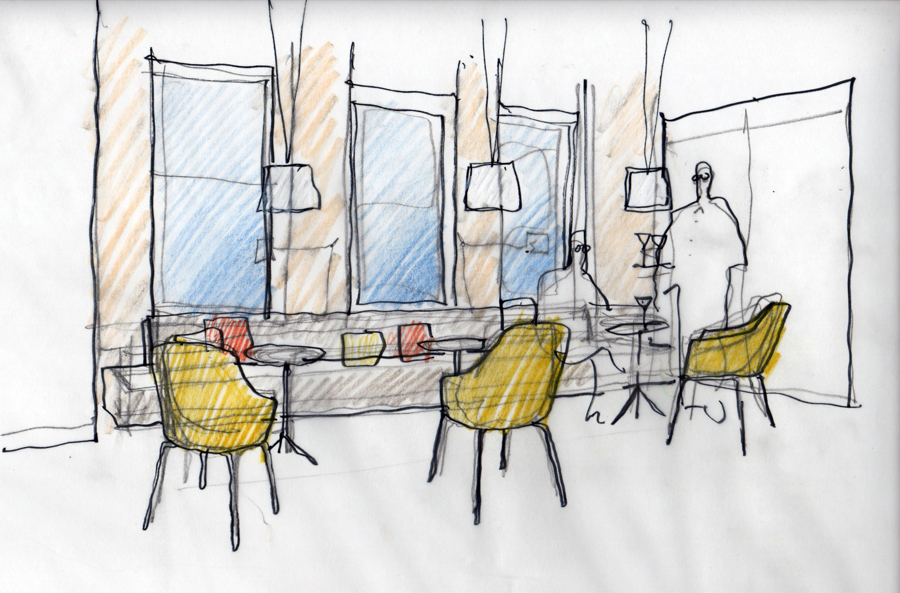
Brian Graham’s design for Neocon 2015
Well, that depends on what I’m working on at the time. I really like working in our studio in San Francisco, which is located in the Potrero Flats section of The City. We have space to spread things out and live with our sketches and drawings and materials…lots and lots of materials. I also love to sit on an airplane and draw. In fact, I can probably get more pure design work done on a 5 hour flight to the East Coast than I can sometimes accomplish in 3 or 4 days in the studio. There’s a lot of distractions in a working studio, and you have your personal life…and conference calls… I’m on the telephone a lot…they never tell you that in school….”you’re going to be on the phone most of the day so get used to it”
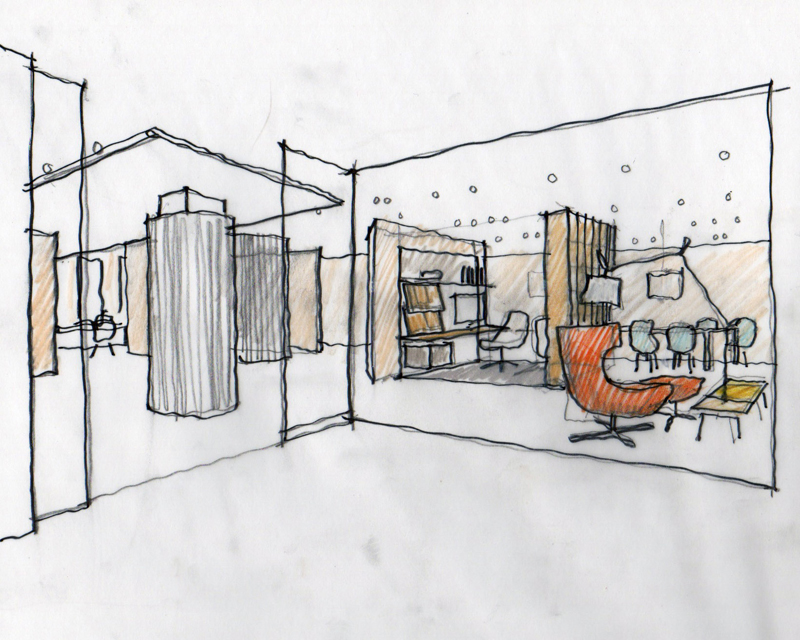
Brian Graham’s design for Neocon 2015
I see no difference between the personal and the professional in relationships. To build a strong relationship requires, in my view, mutual respect, admiration and trust along with an ability to communicate to each other honestly and directly. I’ve been very fortunate to have partnered with a number of really great clients…and I use the word partnership in the very literal sense. We’re both investing time, energy and effort into developing a new thing, and everyone has a stake in it.
Towards that end I’ve advised young designers seeking their first projects to be discerning about their first client. In my experience it’s just as important for a designer to pick the right client as it is for the client to choose to work with you. To do this well, it’s important to understand that it’s a team sport. You’re going to be very deeply involved with their team, for a significant length of time. And you’re going to be working with a lot of folks with differing expertise…people in marketing, sales, manufacturing, engineering…and they all have opinions…and you’ve got to manage all of that and synthesize it, distill it into a cohesive, coherent design.
I think that’s part of it, certainly…the Ratio table is my take on modern farm table…something that has a visual scale and presence that should anchor a room…so on first blush the snapshot is simplicity…but then if you look closer the form varies at the ends and presents a much lighter, thinner profile. In my view the environments we’re seeing today are increasingly eclectic, and visually busy, almost chaotic…and so my sense is that you need some simple, strong, honest forms to provide a balance to those objects, to complement them and be in the background. The real challenge though in simplicity is there’s nowhere to hide! What I mean is that when you design a clean modern piece of furniture it has to be thoughtfully detailed and it must be executed at the highest level of craftsmanship or it just won’t work. That’s where the manufacturing partner has to be top-notch.
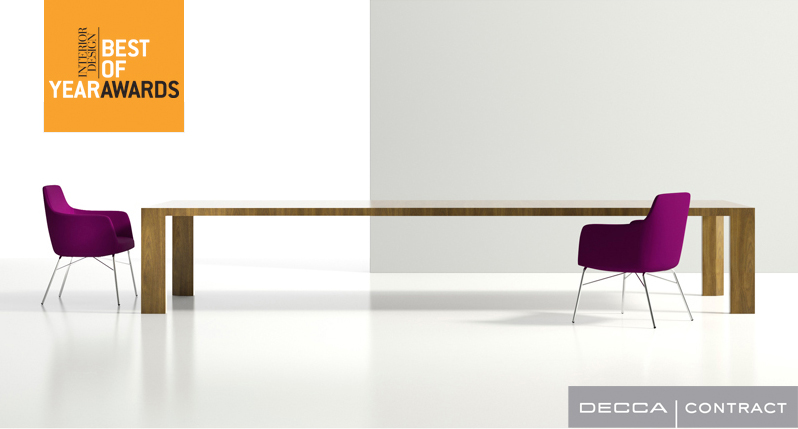
Ratio™ Conference Table
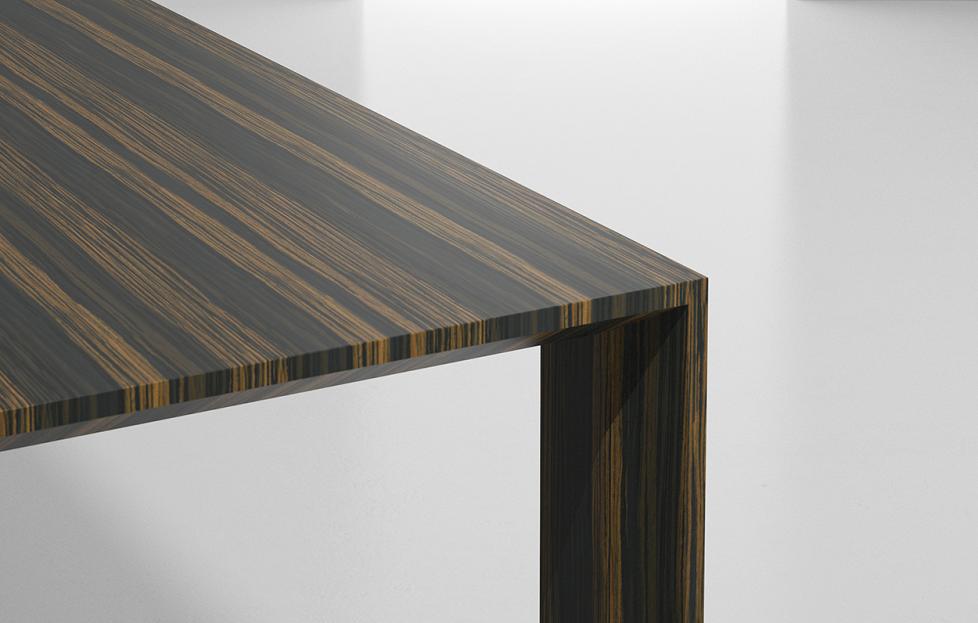
Ratio™ Conference Table detail
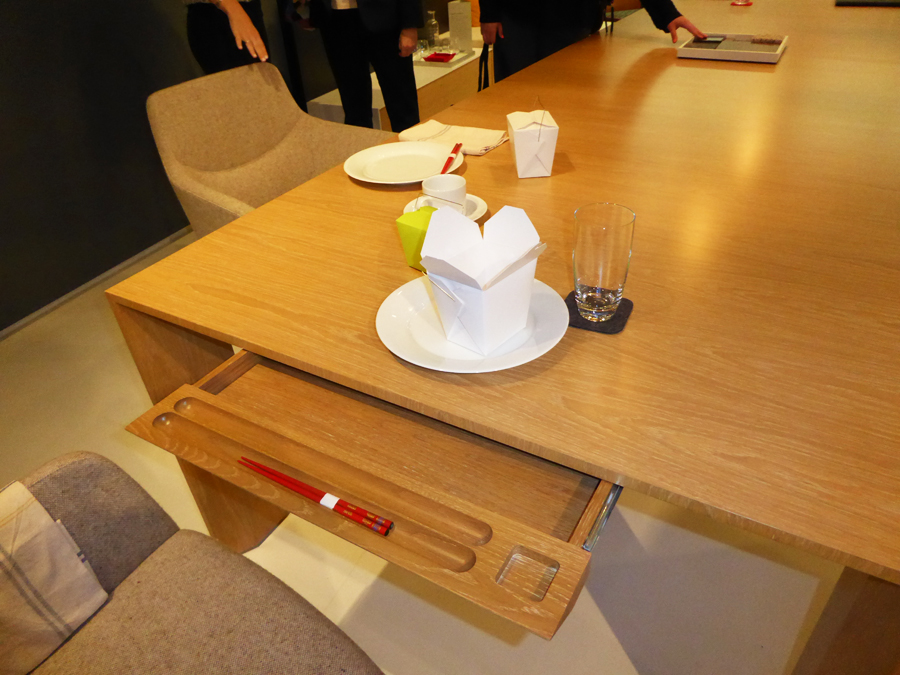
What? I’m sorry I couldn’t hear what you were saying… I think open offices are a work in progress. Which is exciting because their like a lab…we should be constantly running experiments and measuring the results. What’s clear is that there is no one office type that works universally, in fact, what we’re seeing is a strong desire for a rich mix of spaces, both large and small, open and closed which all have to co-exist. And that’s where the interior designer earns their keep…because they coordinate all of these disparate elements into a cohesive whole.
On a personal note our studio is not unlike a modern work place: We like choices, we want different experiences at different times. Since it’s just my wife Nancy and I in our studio most days we don’t have a lot of other folks to deal with, so it’s pretty low key…but if we crave some human interaction there’s a Peets’ Coffee right around the corner.
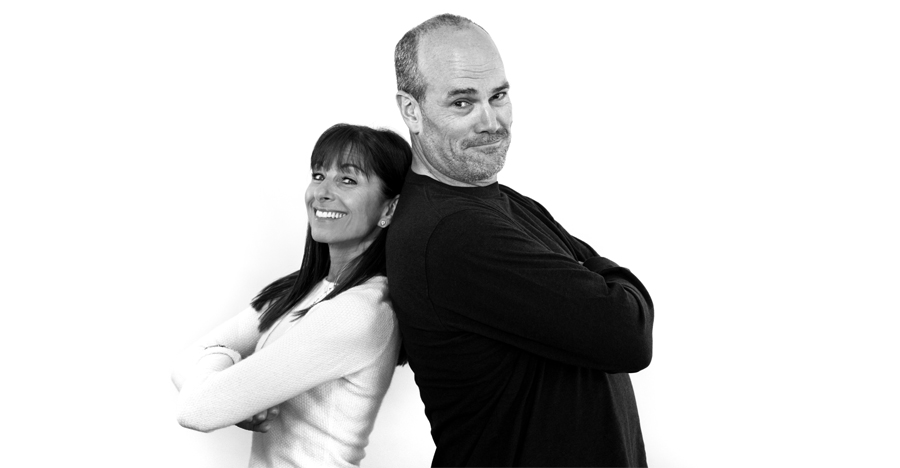
Brian Graham with his wife Nancy Graham
The Dialogue Collection reflects the 10+ year relationship that we’ve had with Decca. The original notion stemmed from the idea that the company needed a platform that could bring all of the architectural materials that Decca works so fluently in together: wood, glass, stone and metal. From its initial introduction in 2007, the Dialogue collection, much like the modern workplace, has grown and evolved, so we’ve been adding new elements and updating the design to keep it relevant, both functionally and aesthetically. It’s funny because the name Dialogue was our first choice and it so perfectly fits the product, and by extension our relationship with Decca, which we’re very proud of and which continues to flourish.
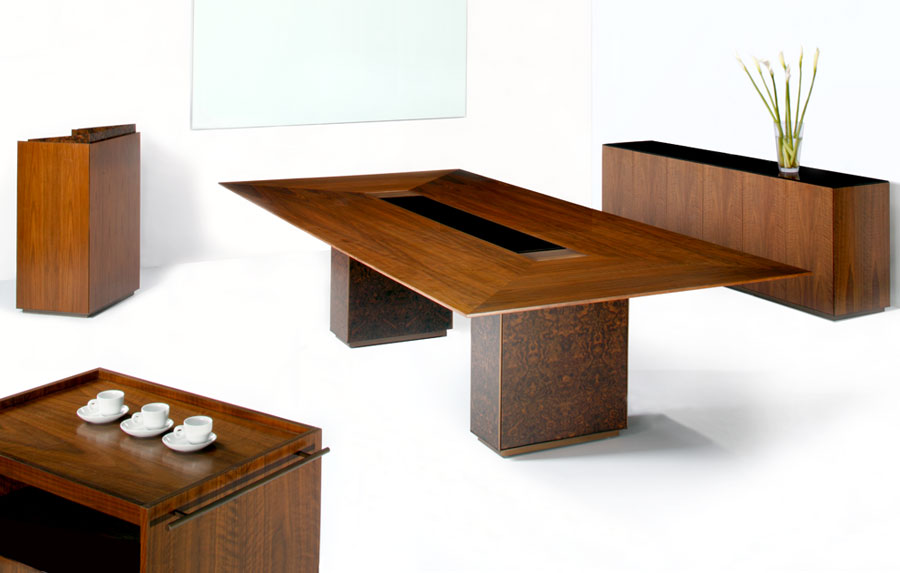
Dialogue™ Conference Room
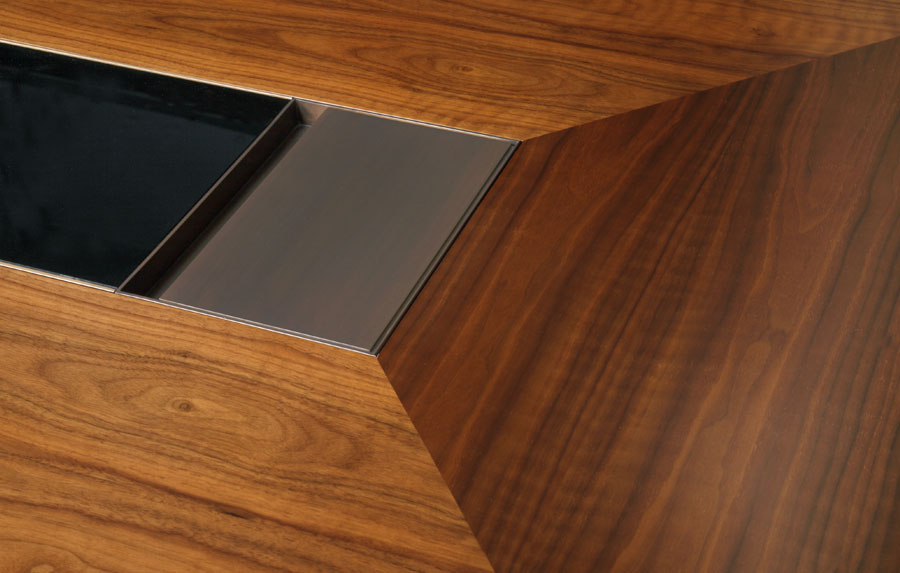
Dialogue™ Cable System
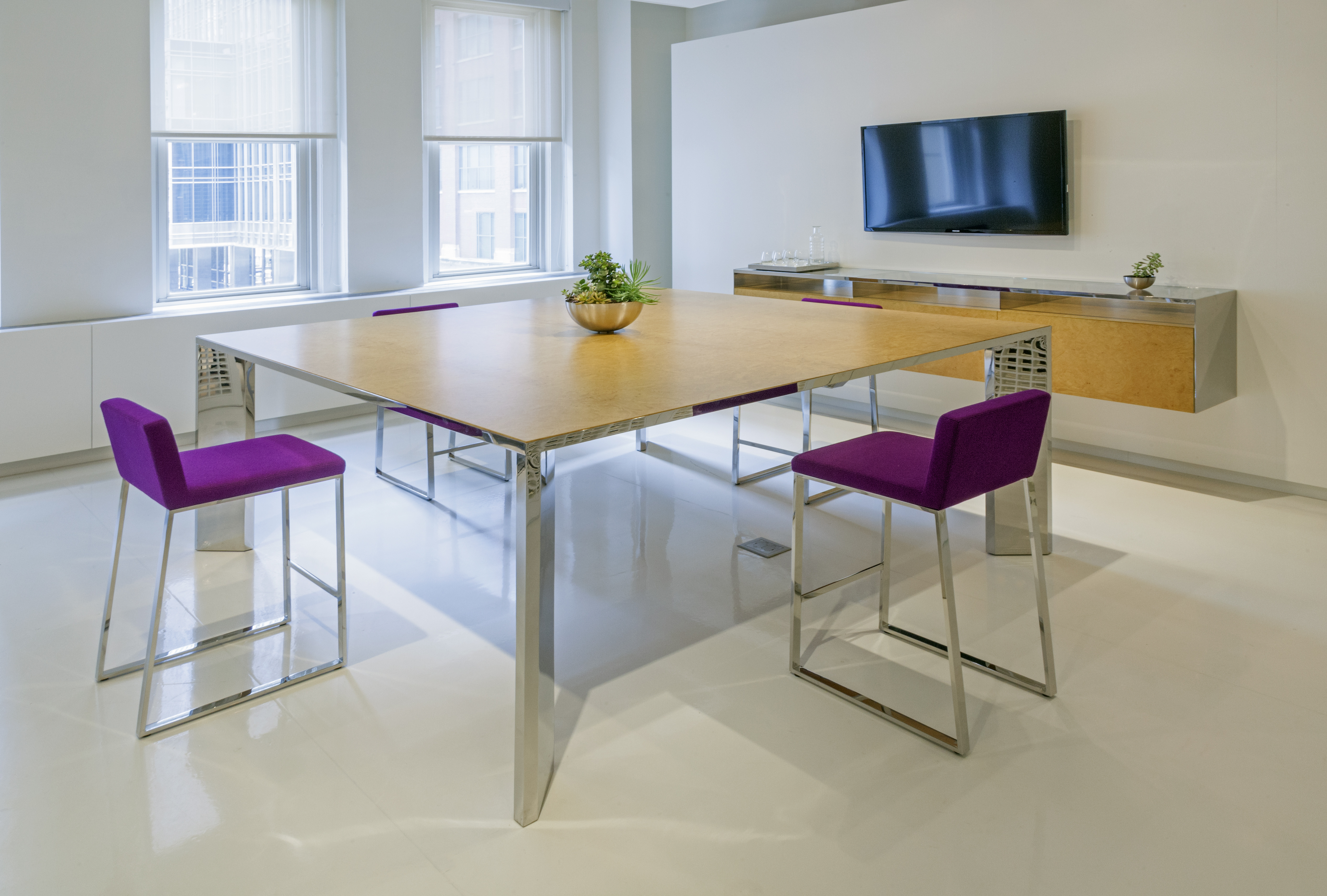
Modern design of Dialogue™ Conference Tall Table with polished stainless steel base and wood top
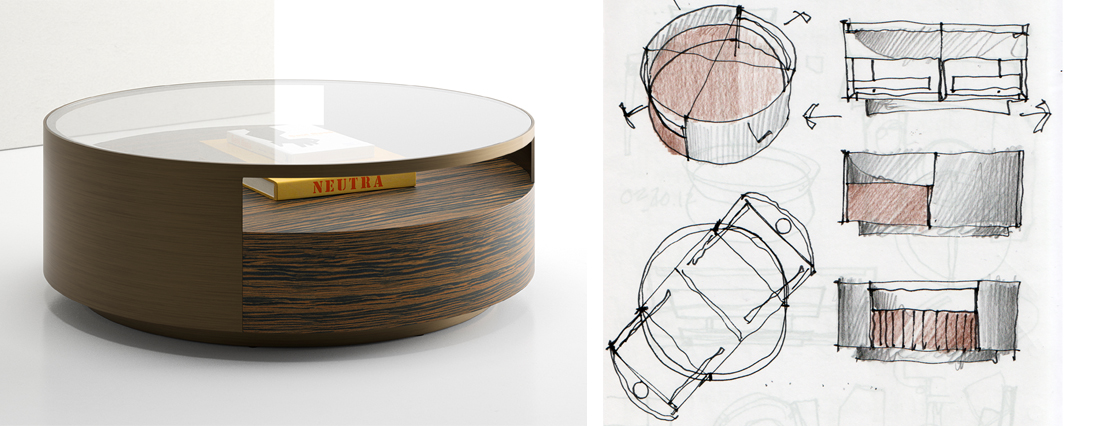
Brian Graham’s Museum Round Coffee Table designed for Decca Contract
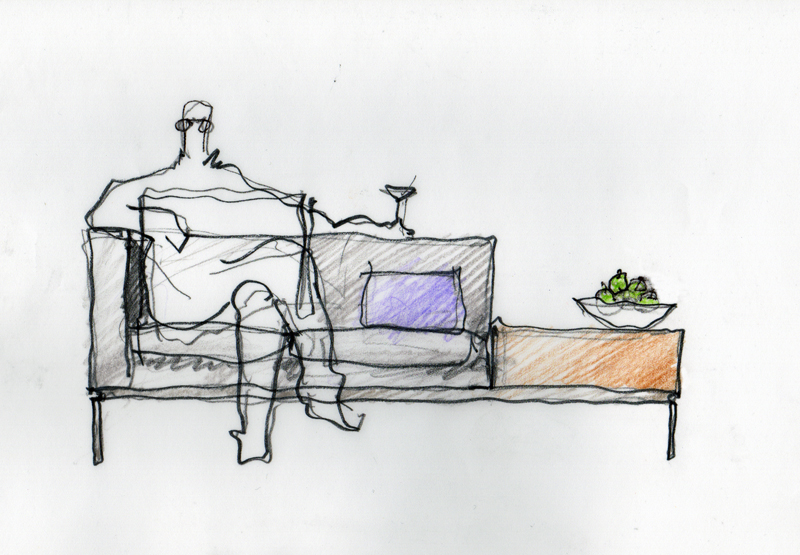
Brian Graham’s sketch of the sofa from Span Collection designed for Decca Contract
Brian Graham has been working with Decca for many years now. Apart from FrameWork™, he designed Basis™, Dialogue™, Museum™, Plateau™ and Ratio™ case goods collections, and also Museum and Span lounge seating collections.
View all Brian Graham’s collections for Decca Contract